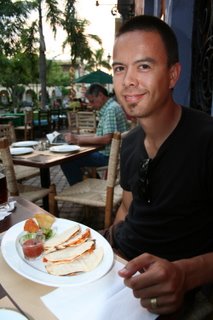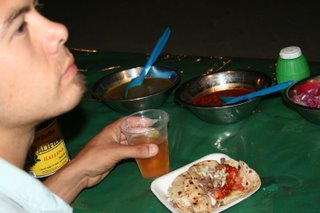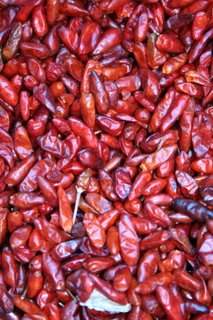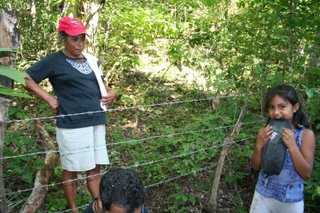One of my favorite things about Mexico is the prevalance of great street food – it´s cheap, tasty, extremely diverse, very “authentic” and (…the croupier spins the roulette wheel and releases the ball... ) there is always the chance of contracting Montezumas revenge! But as the recent E. Coli epedemic linked to bagged spinach showed us – there is an inherent risk in eating anything, even something that is “triple washed.” But I´m getting into another topic entirely.
Anyways, the undisputed king of the Mexican street scene is the taco. There are a number of tasty treats that fall under the umbrella term “taco”- basically a tortilla wrap (various incarnations of maize or wheat flour) around a filling. Over the course of this trip, I have lost track of the number of tacos I have eaten – around the second week I was at 40+ (these are much, much smaller than your Taco Bell taco), not including all the times I used tortillas as the vehicle to transport food from my plate to my greedy mouth.
Along our drive, we have seen (and tasted) a great number of fillings for tacos: carne asada (grilled beef steak), bistec (another steak cut), chorizo (spicy pork sausage), cabeza (“head” from the cow – I think it is neck and cheeks that are stewed), tripa (tripe), adobada (marinated pork), carnitas (pieces of pork fried in fat, then cooked again), camarones (shrimp), ositones (oysters), marlin (smoked gamefish), machaca (dried shredded beef), birria (stewed goat meat), costilla (pork ribs), al pastor (rotisserie pork).
 This doesn't need a caption.
This doesn't need a caption.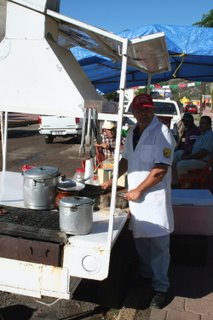 Beto and his taco stand - he starts serving at 7AM, in time for breakfast.
Beto and his taco stand - he starts serving at 7AM, in time for breakfast. Some of the fancier rigs even have little stools or tables for you to sit at, and a whole smorgasbord of salsas, pickled chile peppers, chopped vegetables and limes to choose from. However, the process is more or less the same. The cook asks you what you want (say... 4 tacos with carne asada), and if you want it with “greens” aka, onion and cilantro. You then take your piping hot tacos to where there is a great variety of salsas and lime wedges to add the right touch of heat. You can always go for seconds or thirds. Don´t be shy. At about 60 cents each taco, Heather and I walk away satiated and happy for under 5 bucks every time. I absolutely love these little stands and wanted to share some of that with all of you and to encourage you to patron one of these little stands the next time you are here. Just make sure you go to one where the cook is not the same person handling money!
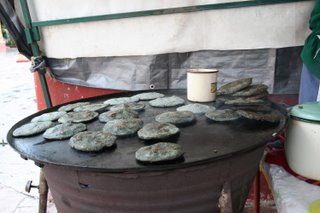 These gorditas, made fresh with blue corn masa are then opened and filled with a number of great combinations.
These gorditas, made fresh with blue corn masa are then opened and filled with a number of great combinations. 